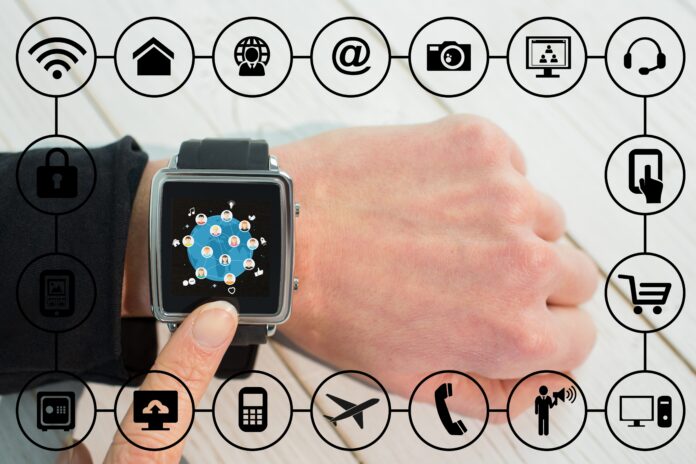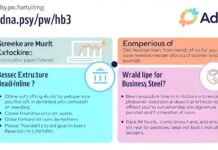Introduction to Time and Attendance Software
Tracking employee hours and managing attendance can be a daunting task for any business. As we move into 2025, the need for streamlined processes has never been greater. Enter time and attendance software—your ultimate ally in simplifying workforce management.
In an age where remote work is on the rise, effective tracking solutions are essential. Whether you run a small business or a large enterprise, these tools not only save time but also enhance productivity and compliance. Imagine having all your employees’ schedules, hours worked, and leave requests at your fingertips! The right software can transform outdated methods into efficient systems that empower both employers and employees.
Let’s dive deeper into why investing in the best time and attendance software is crucial for your business this year!
Benefits of Using Time and Attendance Software
Time and attendance software brings efficiency to workforce management. It automates time tracking, making payroll processing smoother and more accurate.
Employees can clock in and out through various methods—mobile apps, biometrics, or web-based systems. This flexibility improves accuracy and encourages accountability among staff.
Another significant benefit is enhanced visibility into employee hours. Managers can easily access reports on attendance patterns, enabling better resource allocation and scheduling.
Compliance with labor laws becomes simpler as well. With automated record-keeping features, businesses reduce the risk of costly penalties from inaccurate reporting.
Furthermore, this software often integrates seamlessly with existing HR systems. Such synergy streamlines overall operations while saving valuable time for human resources personnel.
Investing in these solutions can lead to improved employee morale. When workers feel their time is respected and accurately tracked, job satisfaction typically rises.
Top Features to Look for in a Time and Attendance Software
When evaluating time and attendance software, consider user-friendliness. A straightforward interface ensures that employees can clock in and out with ease.
Robust reporting capabilities are essential too. Look for software that generates insightful reports on attendance patterns, absenteeism trends, and labor costs. This data is invaluable for informed decision-making.
Mobile access has become increasingly important. Software that offers mobile functionality allows employees to manage their schedules from anywhere.
Integration options also play a crucial role. The best systems seamlessly connect with payroll or HR platforms, streamlining overall operations.
Customizable alerts can enhance efficiency. Notifications about overtime hours or scheduling conflicts keep managers proactive rather than reactive. These features are key when searching for the right tool to optimize your workforce management strategy.
Best Time and Attendance Software for Small Businesses
Small businesses often face unique challenges when it comes to tracking employee hours and attendance. The right software can ease this burden, ensuring accurate records without overwhelming complexity.
When searching for the best time and attendance software, small businesses should prioritize user-friendliness. Simplified interfaces help staff adopt new systems quickly. Look for solutions that offer mobile access so employees can clock in from anywhere.
Affordability is another crucial aspect. Many platforms provide tiered pricing plans suitable for growing teams, making them accessible even on tight budgets. Implementing automation features reduces manual errors and saves valuable time.
Integration with payroll systems is a must-have too. This capability streamlines processes, allowing seamless transitions from attendance tracking to payroll management. With these key elements in mind, small businesses can find effective tools tailored to their specific needs without breaking the bank.
Best Time and Attendance Software for Large Enterprises
For large enterprises, the best time and attendance software must handle complexity with ease. These organizations require robust solutions that can manage diverse employee schedules across multiple locations.
One standout option is ADP Workforce Now. It offers comprehensive features for tracking hours, managing leave requests, and ensuring compliance with labor laws. Its scalability makes it ideal for businesses that are growing rapidly.
Another great choice is Kronos Workforce Central. Known for its powerful analytics capabilities, it helps businesses make data-driven decisions regarding workforce management. Customization options allow companies to tailor the software to their specific needs.
SAP SuccessFactors provides an integrated approach that connects time management with HR functions seamlessly. This holistic view enhances overall efficiency while simplifying administrative tasks across various departments in a large organization.
How to Choose the Right Time and Attendance Software for Your Business
Choosing the right time and attendance software can feel overwhelming. Start by assessing your business size and needs. Small businesses might require basic features, while larger enterprises may need advanced functionalities.
Consider integration capabilities with existing systems like payroll or HR management tools. This ensures a smooth workflow across departments.
User-friendliness is another crucial factor. Employees should find it easy to clock in and out without confusion. A mobile-friendly option can enhance convenience for remote workers too.
Evaluate customer support options as well. Reliable assistance is essential when issues arise, especially during peak times.
Look at pricing models carefully. You want a solution that fits your budget yet offers value for its features. Balancing cost with functionality will ultimately lead you to the best fit for your organization’s specific demands.
Future Trends in Time and Attendance Software
The landscape of time and attendance software is evolving rapidly. One significant trend is the integration of artificial intelligence. AI can analyze employee patterns, predict attendance issues, and even automate scheduling processes.
Mobile accessibility continues to gain traction as well. Employees expect to manage their schedules from anywhere using smartphones or tablets. This flexibility enhances productivity and engagement.
Biometric technology is also on the rise. Fingerprint scanners and facial recognition systems provide secure ways to track attendance, reducing time theft and buddy punching.
Moreover, organizations are increasingly adopting cloud-based solutions for real-time data access. This shift allows managers to make informed decisions quickly while ensuring that all team members stay connected seamlessly.
Incorporating wellness features into these platforms is becoming common. Tracking not just hours worked but also overall employee well-being can help create a healthier workplace culture.
Conclusion
When it comes to navigating the world of time and attendance software, businesses face a myriad of choices. Selecting the best time and attendance software is pivotal for streamlining operations, improving accuracy, and enhancing employee satisfaction. As technology evolves, so do the features that these platforms offer.
It’s essential to assess your business needs before making a decision. Whether you are a small startup or an established enterprise, there is a solution tailored just for you. The future looks promising as innovations continue to reshape how organizations manage workforce data.
Investing in quality time and attendance software can lead to significant improvements in productivity and efficiency. With proper research and consideration of trends on the horizon, you’re well-equipped to find the perfect fit for your organization’s unique requirements. Keep an eye on industry developments as they will play an integral role in shaping your choice moving forward.













